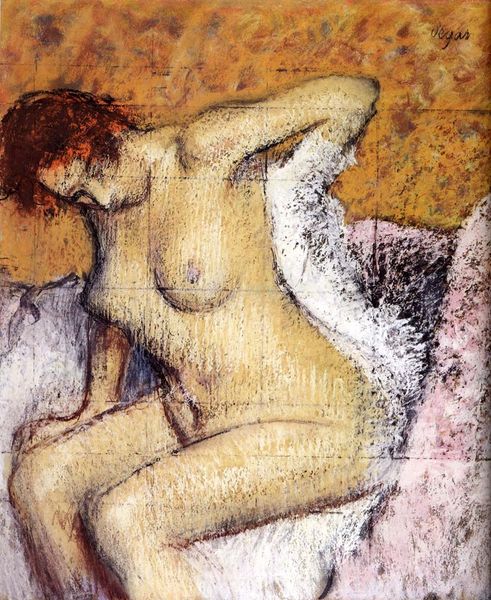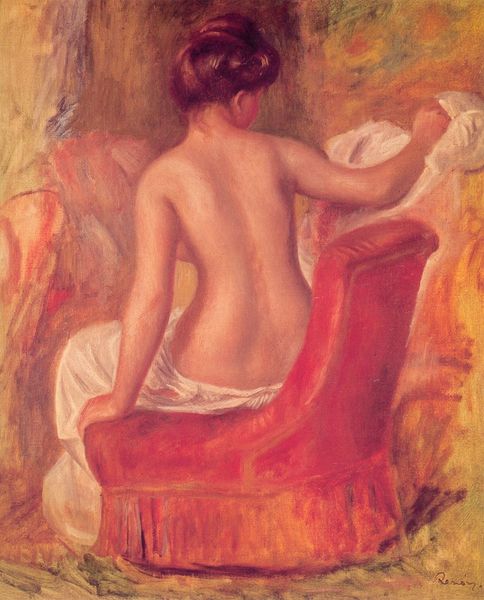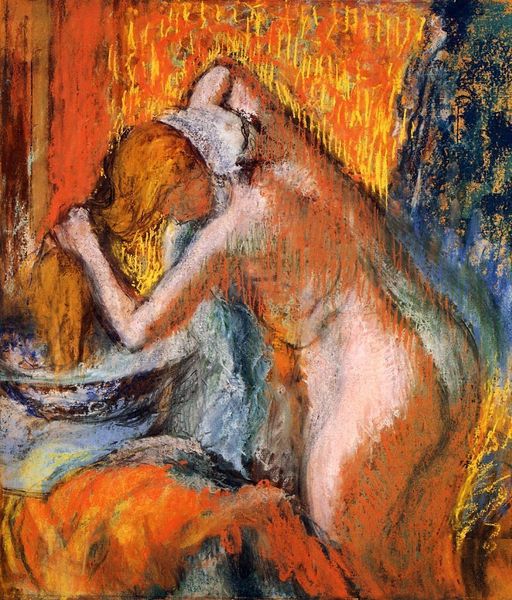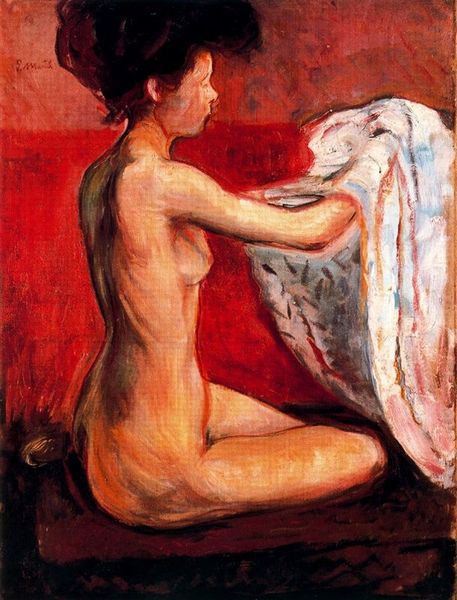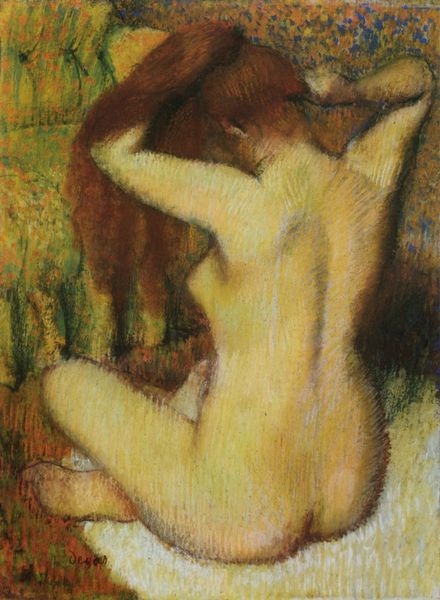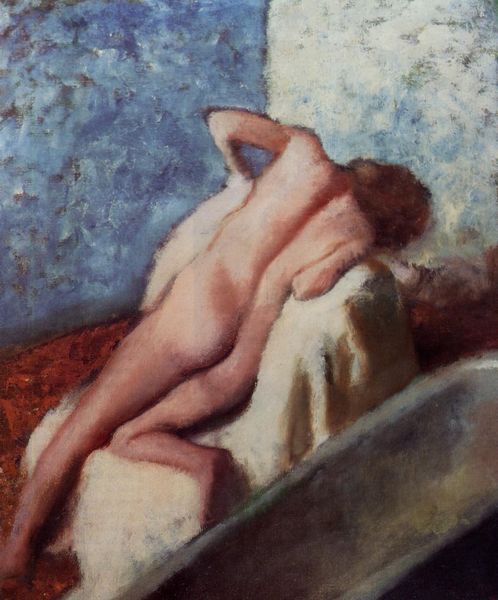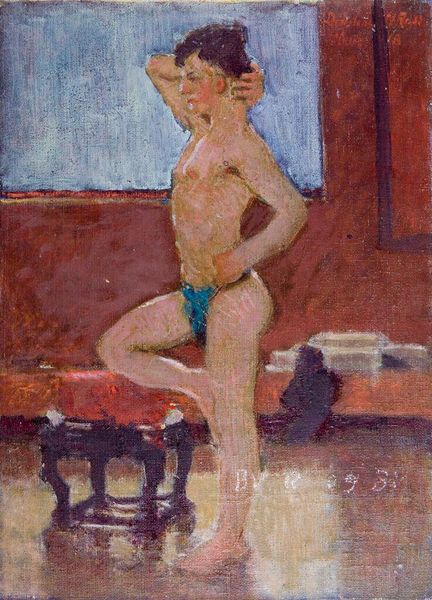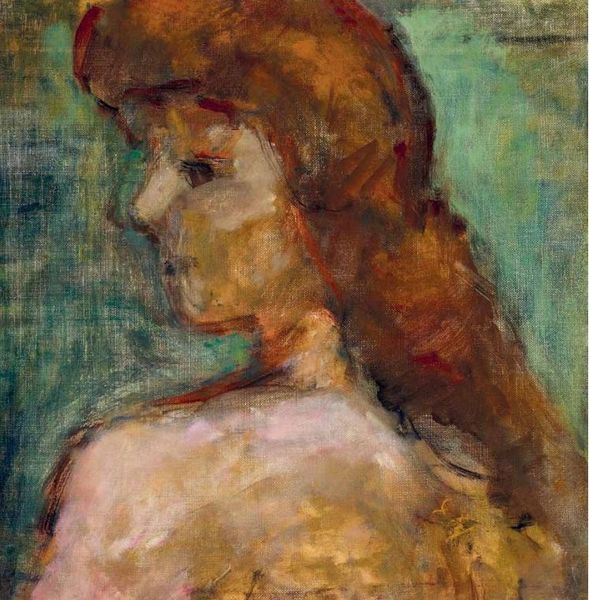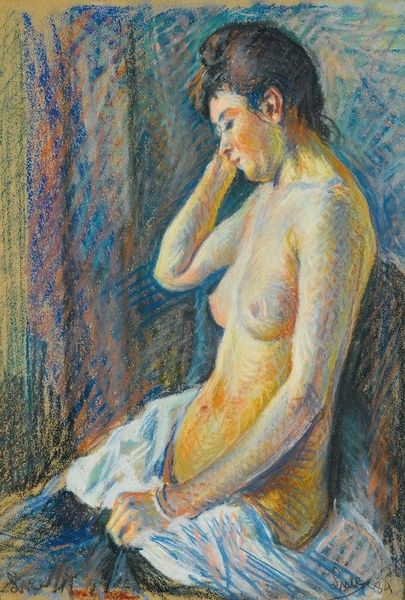
Copyright: Public domain
Curator: Edgar Degas's pastel work, "After the Bath," created around 1895. The piece captures an intimate moment. Editor: My first thought is its tenderness and the almost hazy, dreamlike quality imparted by the pastel medium. Curator: Observe how the composition emphasizes line and form. The sinuous curve of the bather’s back and shoulders dominates the visual field. Editor: Right, but beyond that linearity, consider the loaded cultural history of the bath itself, going all the way back to antiquity and ritual purification. Degas seems to secularize and internalize that symbolism, creating a sacred space. Curator: Interesting, the intimacy certainly invites analysis. However, let's think of Degas’s mark making. See how the short, almost frenetic strokes build texture. Note the application of layered pastels, and how these colors interact and contribute to an almost tactile surface. Editor: Those touches speak to a broader obsession. The bath, traditionally a cleansing ritual, evolved. It is now intertwined with modern concepts of hygiene and female beauty, a reflection of changing social mores and bourgeois aspirations. Curator: Consider the pose itself. There’s a deliberate avoidance of idealization, which feels in keeping with the broader project of realism that we see emerging at the time. Editor: Still, the image vibrates with emotional weight – of vulnerability, reflection, and even, in a strange way, defiance, if one sees this an unveiling of societal conventions of the day. Curator: Perhaps. Although what resonates with me is Degas’s masterful control of form. Editor: To me, it resonates as the power of daily ritual made transcendent, drawing on centuries of loaded imagery. Curator: The beauty lies in its simplicity and that focus on structure. Editor: It does reveal Degas’s skill at making the everyday, extraordinary.
Comments
No comments
Be the first to comment and join the conversation on the ultimate creative platform.
